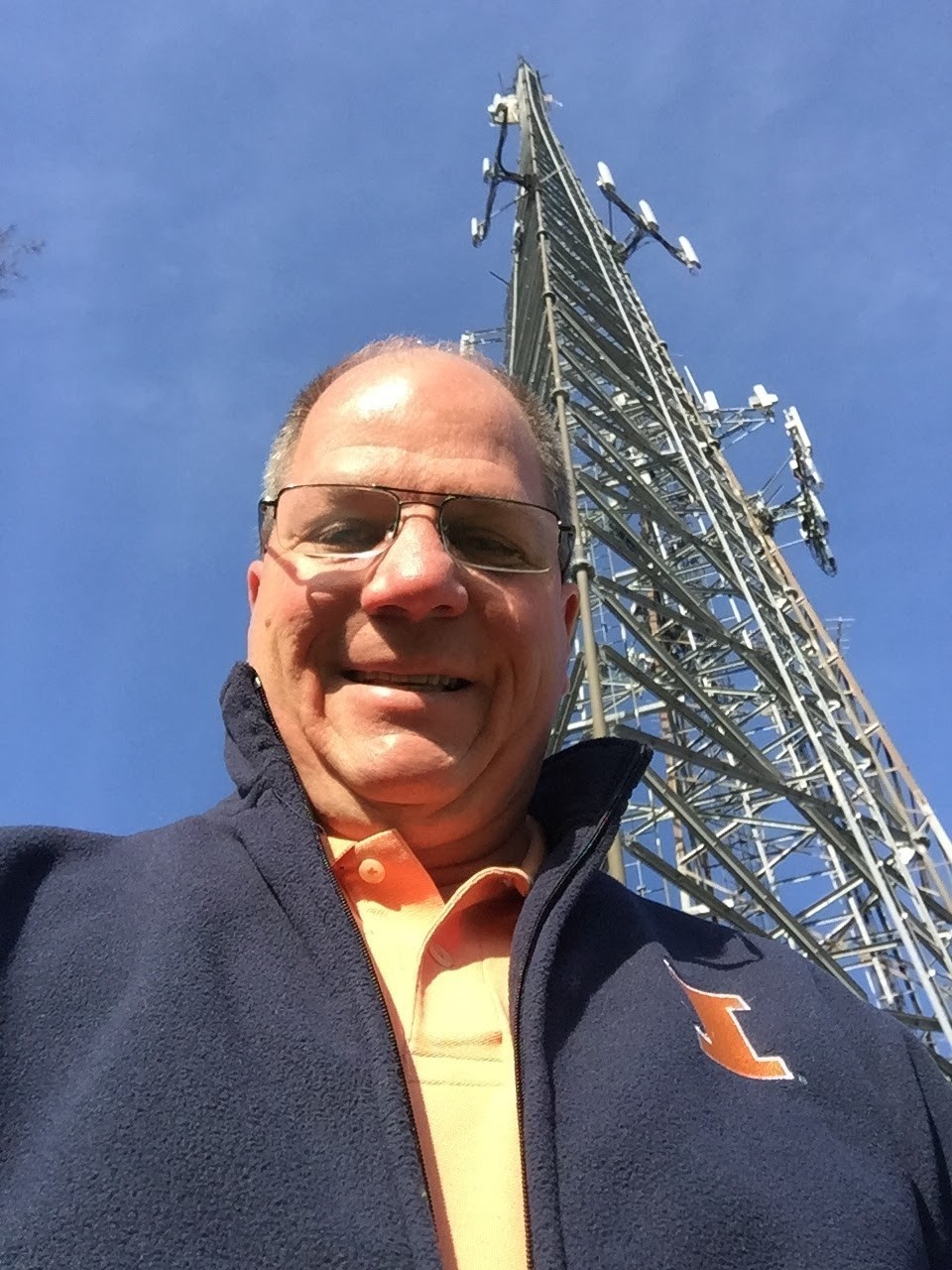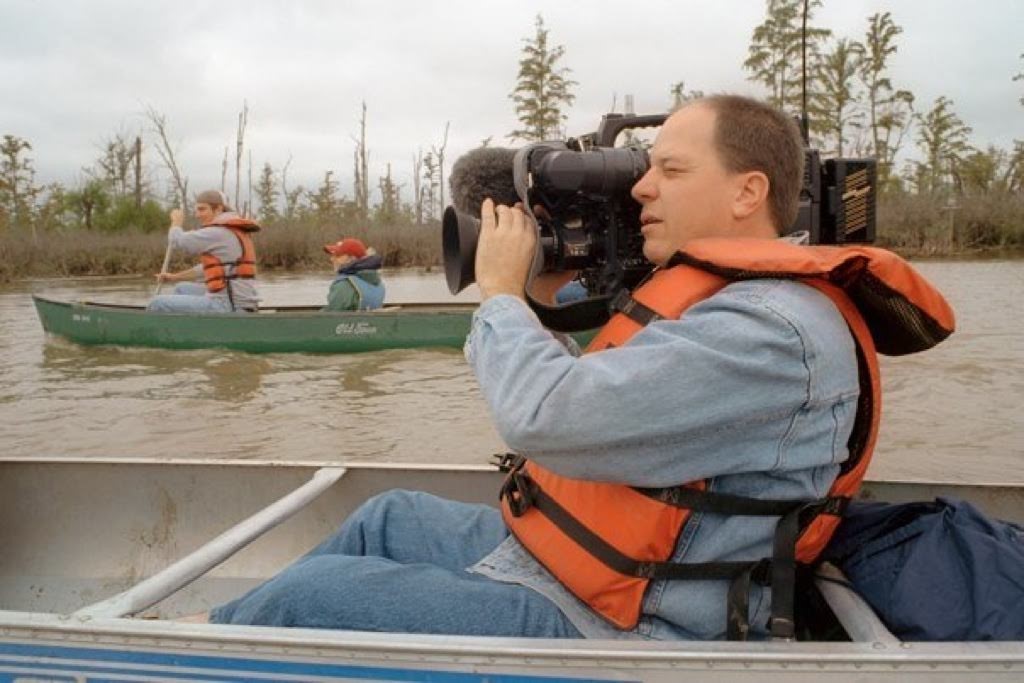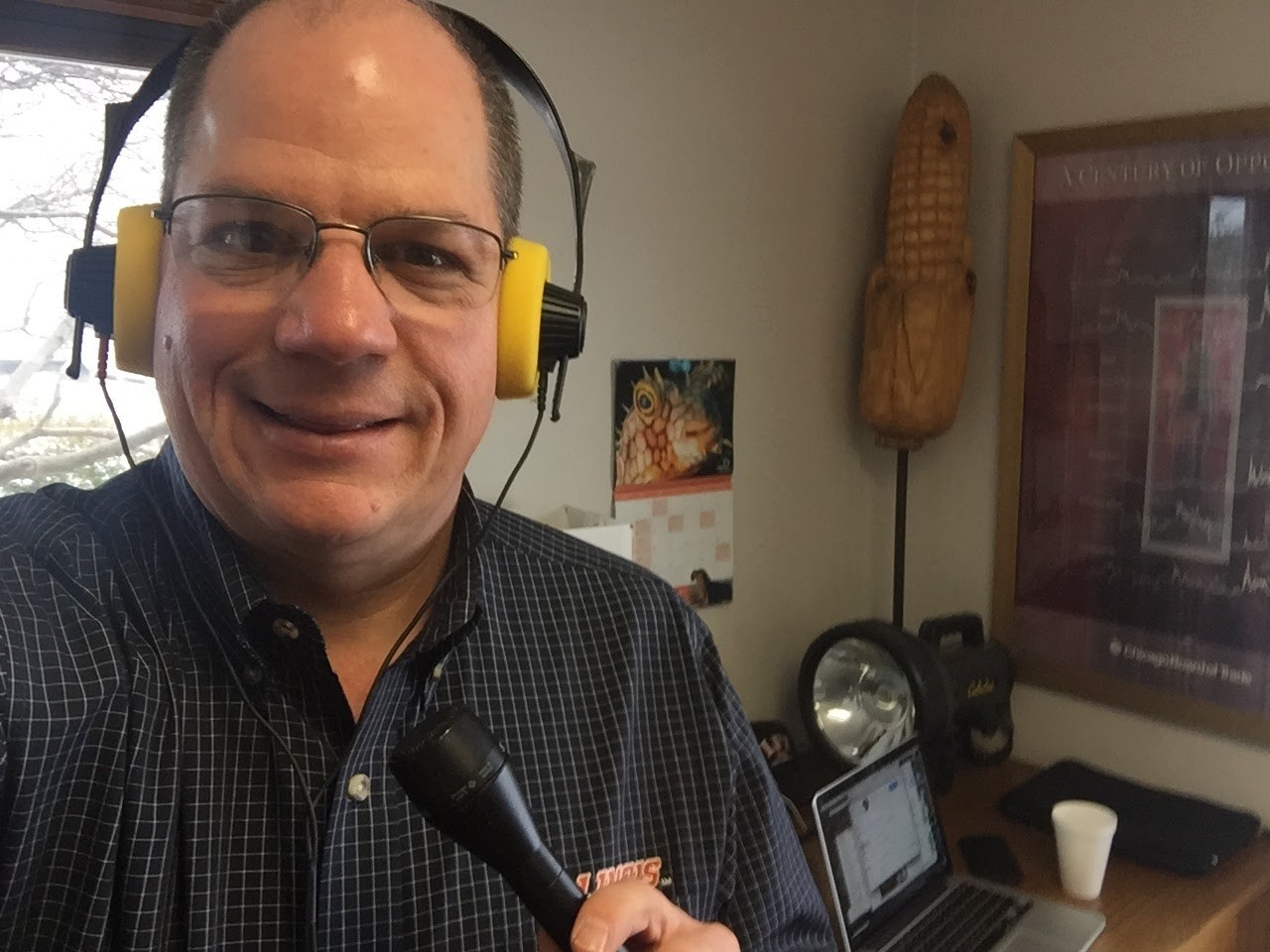 Todd Gleason (Non-Commercial Broadcast Council, University of Illinois, Urbana, Illinois) decided to become a farm broadcaster in high school. Like many of his decisions, it was practical. He is the fifth of six farm boys from Logan County, Illinois, and it was clear there would not be a good path back to the farm for him. He decided to do the one thing that stopped everything on the farmstead. When the farm broadcaster was on the radio, everyone listened.
Todd Gleason (Non-Commercial Broadcast Council, University of Illinois, Urbana, Illinois) decided to become a farm broadcaster in high school. Like many of his decisions, it was practical. He is the fifth of six farm boys from Logan County, Illinois, and it was clear there would not be a good path back to the farm for him. He decided to do the one thing that stopped everything on the farmstead. When the farm broadcaster was on the radio, everyone listened.
Gleason called the University of Illinois in 1982 and asked to speak with the advisors for the agricultural communications program; his plan was to transfer from Lincoln Land Community College (LLCC). Jim Evans listened, sent paperwork outlining every LLCC class he would need to take over the following two years and to which classes they corresponded at the University of Illinois. Two years and 61 transferable credit hours later, Gleason arrived on campus in Urbana-Champaign.
During his college years, he was active at LLCC, serving as the student-body vice president and traveling with the livestock judging team. He learned to give a set of reasons for the top four animals in a class and believes this is one of the foundations of his on-air demeanor today. His first job in radio came while at LLCC, too. Lincoln Land is in the same city as the Illinois State Fair — Springfield. Gleason has worked the fair since being part of the 1983 Illinois Department of Agriculture’s State Fair Radio Network. It was a pop-up program that aired for 30 minutes over the noon-hour every day of the fair on nearly 100 stations around the state.
Once at the University of Illinois, Gleason took a paid internship at WILL AM580. The programming content he hosts today for WILL was established while he was a student. He had a small hand in shaping it. It 1985, the Midwest was in the depths of the farm crisis. The first Farm Aid Concert was held at the University of Illinois football stadium that fall. Gleason was there and at many others that followed, mostly as a farm reporter for WILL starting in 1989 after spending time learning how the commodity markets worked with Zwicker and Associates in Bloomington.
He still talks with Dan Zwicker each Thursday as part of the WILL programming. While at Zwicker and Associates, he delivered the first premium advice service to DTN over a 9800 baud modem. It was Zwicker’s advice, but Gleason had written it and worked with DTN in Omaha to arrange the digital delivery. He thinks it was a “pretty cool” technical achievement in the early digital age.
 Gleason introduced to NAFB. During his time at the University of Illinois, Jim Evans introduced Gleason to NAFB. They traveled to the convention in Kansas City. The association has long played a role in his career despite his having never been employed by a commercial radio station. Gleason’s whole broadcasting career has been in government service in one form or another via the Illinois Department of Agriculture, NPR-affiliate WILL, the University of Illinois College of Agricultural, Consumer, and Environmental Sciences (ACES), or University of Illinois Extension. While he could not be a member of NAFB at the time, Gleason won the 1991 Oscar in Agriculture (now known as The Doan Award). It is his most prized award. Gleason left WILL in March 1994 and moved a block-and-half on the University of Illinois campus to the agricultural college.
Gleason introduced to NAFB. During his time at the University of Illinois, Jim Evans introduced Gleason to NAFB. They traveled to the convention in Kansas City. The association has long played a role in his career despite his having never been employed by a commercial radio station. Gleason’s whole broadcasting career has been in government service in one form or another via the Illinois Department of Agriculture, NPR-affiliate WILL, the University of Illinois College of Agricultural, Consumer, and Environmental Sciences (ACES), or University of Illinois Extension. While he could not be a member of NAFB at the time, Gleason won the 1991 Oscar in Agriculture (now known as The Doan Award). It is his most prized award. Gleason left WILL in March 1994 and moved a block-and-half on the University of Illinois campus to the agricultural college.
Transition to digital. His first assigned task for the College of ACES University of Illinois Extension, beyond the weekly radio programming, was to convert the radio studio to digital. He had the computer equipment purchased late that fall, and he looked at it for about four months. Then, on a Friday afternoon in the winter of 1995, Gleason took every piece of analog equipment out of the 8x8 studio from which he still works today and replaced it with the new digital gear. It took about a month for him to become as efficient with it as he had been with a reel-to-reel recorder and a razor blade. Content production efficiency remains one of Gleason’s highest priorities, and he is still willing to completely dump old ways of doing things for more time- and cost-effective ways of quality content development. He worked on the bleeding edge during the early stages of the digital transition for radio and TV. The University of Illinois sent him to San Francisco and Atlanta to learn about streaming media and mp2 files (mp2 was the pro version of mp3). He talked with engineers in the Bay Area often about codecs and “sparkle” on the top end of streaming files. He delivered radio programs via mp2 files to the RFD Radio Network in Bloomington, Illinois, in May 1998. The 8-megabyte files crashed the Illinois Farm Bureau’s email server several times.
Gleason is first member of NAFB’s Non-Commercial Council. During this same period, Gleason asked NAFB if he could attend the annual convention in Kansas City and sit in the newsroom as a resource for digital production. He had transitioned to radio production on a laptop in 1996; and, by the end of the decade, hewas certain farm broadcasters would be on the road with these devices. It was one of the earliest steps toward the creation of the non-commercial broadcast council membership category. Gleason was the first member of that category. He saw NAFB members as his primary peer group and wanted to learn from them and to share with them. Gleason returned to WILL in July 2003, although he remained a College of ACES employee. In that first month, a couple of important decisions were made, and both were related to technology and the future of farm broadcasting at the University of Illinois. Commodity Week was put in an online RSS feed. It has been a podcast ever since, although at the time the word “podcast” had not been coined. The other decision is a guiding principal of content delivery: digital first with a primary distribution device being a phone. Today, more than half of the audience for the programming Gleason produces for WILL listens online with the bulk of those using their cell phones.
 “Radio is still the best option for reaching a broad audience, but a dedicated niche market listenership is vital, and it isn’t just about the voice,” Gleason concluded. “Radio and the web work hand in glove. Radio is the foundation, and the internet can be the direct connection. It might be whole programs, long-form interviews, video sound bites, or a tweet. There is one more thing that makes farm broadcasters so very valuable. It hasn’t ever really been about us or me. It always has been about the people we interview and stories they tell. Sometimes, it is just the information, the weather, and the markets. It’s about the politics and the policy, the dire straits, the financial highs, and the fun things we do. I think the best shows are the ones where you really don’t hear the broadcaster’s voice very often, where he or she is just a guide giving some direction to someone else’s story.”
“Radio is still the best option for reaching a broad audience, but a dedicated niche market listenership is vital, and it isn’t just about the voice,” Gleason concluded. “Radio and the web work hand in glove. Radio is the foundation, and the internet can be the direct connection. It might be whole programs, long-form interviews, video sound bites, or a tweet. There is one more thing that makes farm broadcasters so very valuable. It hasn’t ever really been about us or me. It always has been about the people we interview and stories they tell. Sometimes, it is just the information, the weather, and the markets. It’s about the politics and the policy, the dire straits, the financial highs, and the fun things we do. I think the best shows are the ones where you really don’t hear the broadcaster’s voice very often, where he or she is just a guide giving some direction to someone else’s story.”
